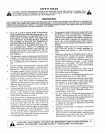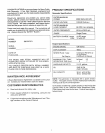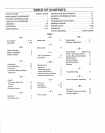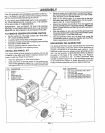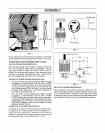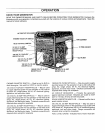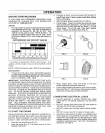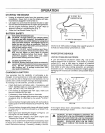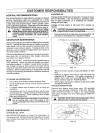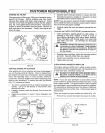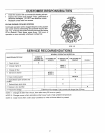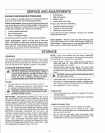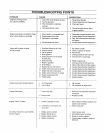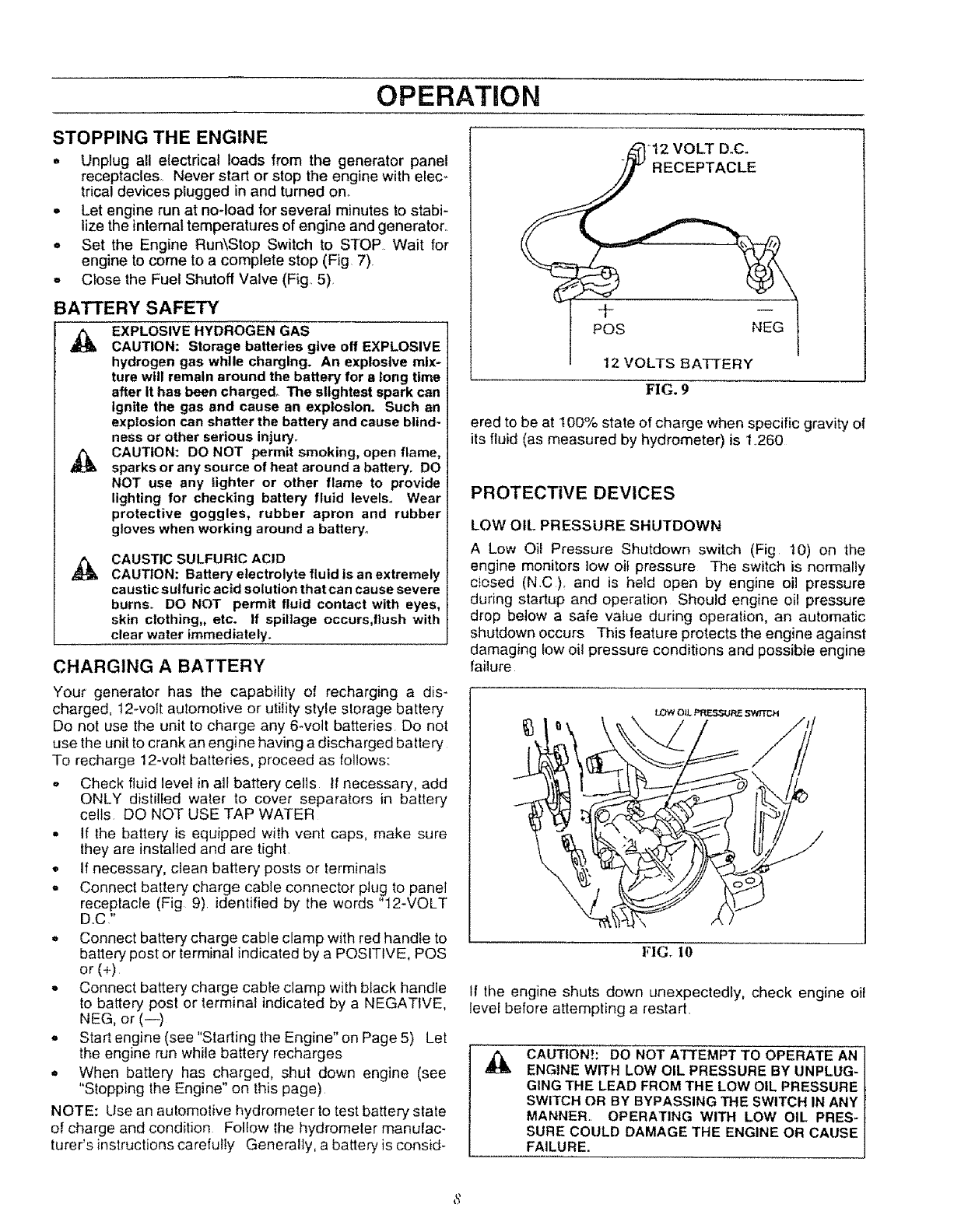
OPERATION
STOPPING THE ENGINE
, Unplug all electrical loads from the generator panel
receptacles, Never start orstop the engine with elec_
tricaldevices plugged in and turned one
° Let engine run at no-load for several minutes to stabi-
lize the internal temperatures ofengine and generator°
,, Set the Engine Run\Stop Switch to STOP Wait for
engine to come to a complete stop (Fig 7)
° Close the Fuel Shutoff Valve (Fig 5),
BATTERY SAFETY
,_ EXPLOSIVE HYDROGEN GAS
CAUTION: Storage batteries give off EXPLOSIVE
hydrogen gas while charging. An exploslve mix-
ture will remain around the battery for a long time
after It has been charged° The slightest spark can
Ignite the gas and cause an explosion. Such an
explosion can shatter the battery and cause blind-
ness or other serious injury.
,i_ CAUTION: DO NOT permit smoking, open flame,
sparks or any source of heat around a battery. DO
NOT use any lighter or other flame to provide
lighting for checking battery fluid levels. Wear
protective goggles, rubber apron and rubber
gloves when working around a battery.
CAUSTIC SULFURIC ACID
CAUTION: Battery electrolyte fluid isan extremely
caustic sulfuric acid solution that can cause severe
burns.. DO NOT permit fluid contact with eyes,
skin clothing,, etc. If spillage occurs,flush with
clear water immediately.
CHARGING A BATTERY
Your generator has the capability of recharging a dis-
charged, 12-volt automotive or utility style storage battery
Do not use the unit to charge any 6-volt batteries Do not
use the unit to crank an engine having a discharged battery
To recharge 12-volt batteries, proceed as follows:
,, Check fluid level in all battery cells If necessary, add
ONLY distilled water to cover separators in battery
cells DO NOT USE TAP WATER
- If the battery is equipped with vent caps, make sure
they are installed and are tight,
• if necessary, clean battery posts or terminals
° Connect battery charge cable connector plug to panel
receptacle (Fig 9) identified by the words "12-VOLT
DC"
,, Connect battery charge cable clamp with red handle to
battery post or terminal indicated by a POSITIVE, POS
or (+)
- Connect battery charge cable clamp with black handle
to battery post or terminal indicated by a NEGATIVE,
NEG, or (--)
- Start engine (see "Starting the Engine" on Page 5) Let
the engine run while battery recharges
,, When battery has charged, shut down engine (see
"Stopping the Engine" on this page)
NOTE: Use an automotive hydrometer to test battery state
of charge and condition Follow the hydrometer manulac-
turer's instructions carefully Generally, a battery is consid-
"12 VOLT D.C.
RECEPTACLE
POS
NEG
12 VOLTS BATTERY
FIG. 9
ered to be at 100% state of charge when specific gravity of
its fluid (as measured by hydrometer) is 1260
PROTECTIVE DEVICES
LOW OIL PRESSL1RE SHUTDOWN
A Low Oil Pressure Shutdown switch (Fig t0) on the
engine monitors low oil pressure The switch is normally
ciosed (NC), and is held open by engine oil pressure
during startup and operation Should engine oil pressure
drop below a safe value during operation, an automatic
shutdown occurs This feature protects the engine against
damaging low oil pressure conditions and possible engine
failure
\
FIG_ I0
If the engine shuts down unexpectedly, check engine oil
level before attempting a restart,
CAUTION!; DO NOT ATTEMPT TO OPERATE AN
ENGINE WITH LOW OIL PRESSURE BY UNPLUG-
GING THE LEAD FROM THE LOW OIL PRESSURE
SWITCH OR BY BYPASSING THE SWITCH IN ANY
MANNER.. OPERATING WITH LOW OIL PRES-
SURE COULD DAMAGE THE ENGINE OR CAUSE
FAILURE.



